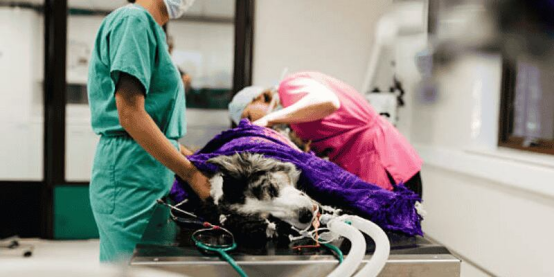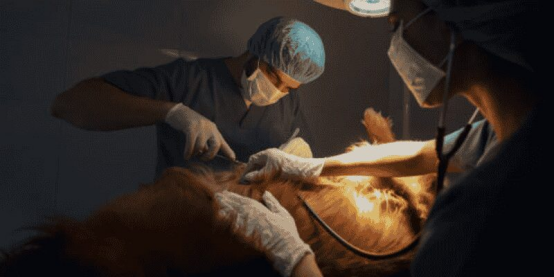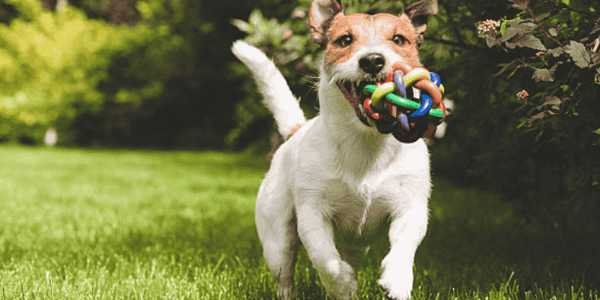Pets
What Is The Best Age To Spay/Neuter Your Dog, According To Vets
As a dog owner, I always feel excited and anxious when making significant decisions about my pet's health. A question I lost sleep over was, "When should I spay or neuter my dog?" Friends and family, even online forum participants, have offered conflicting guidance. Some say to do it early, and others caution against waiting too long. To find answers, I consulted research, spoke with veterinarians and discovered that the "perfect" age is not one-size-fits-all. Here's what I saw.
As a dog owner, I always feel excited and anxious when making significant decisions about my pet's health. A question I lost sleep over was, "When should I spay or neuter my dog?" Friends and family, even online forum participants, have offered conflicting guidance. Some say to do it early, and others caution against waiting too long. To find answers, I consulted research, spoke with veterinarians and discovered that the "perfect" age is not one-size-fits-all. Here's what I saw.
Why Timing Matters
Spaying (females) and neutering (males) are common surgeries that prevent their owners' pets from reproducing. But these procedures do more than prevent unwanted litter. They can also help protect dogs from serious health problems like cancers and infections. The timing makes an enormous difference in how beneficial—and risky—these benefits are.

For decades, veterinarians have recommended spaying or neutering dogs at about six months of age. However, recent studies indicate that this approach may not be practical for every dog. Breed size, growth patterns, and genetic risks are among the factors driving veterinarians' recommendations.
Small Dog Vs Large Dog: A Big Difference
If you have a toy dog, like a Chihuahua or a Dachshund, their size makes a total difference in the equation. Vets usually suggest spaying or neutering small breeds when they’re six to nine months old. That's because smaller dogs grow up quicker. Their bones stop growing earlier, so early surgery does not affect their development.
But the rules change for big breeds like German Shepherds or Great Danes. Because these dogs take longer to mature, it can take as much as two years for them to reach full size. Taking away sex hormones too soon can interfere with the plates of growth, the soft spots in bones that harden as dogs grow older. When the growth plates close prematurely, dogs may develop joint issues such as hip dysplasia later in life. Many vets now recommend that large-breed dogs not be spayed or neutered until at least 18–24 months.
Why Spay/Neuter Too Early May Be Risky For Health
It is not without risk, though, early sterilization. For females, when spayed before their first heat cycle (around six months), the risk of mammary cancer is significantly reduced. But waiting makes sense only up to a point — two years, say — after which you're looking at a higher risk of uterine infections (pyometra), which can be fatal.
Neutering male dogs before puberty can help avoid territory marking or aggression issues. However, early neutering has been associated with an increased risk of joint disorders, such as torn ligaments, in large breeds. Other studies also show a modest increase in certain cancers, such as osteosarcoma (bone cancer), in dogs neutered early.
What Vets Are Saying Now
I also spoke with a local veterinarian, Dr. Emily Carter, who said, "We used to push for six months across the board, and now we give tailored advice for the dog. For instance, a Mastiff may have to wait until they're fully grown, whereas a Poodle can safely go under the knife sooner." She also emphasized the importance of lifestyle. If your dog is a working breed or participates in sports, postponing the surgery might safeguard their joints.

Another vet, Dr Raj Patel, said shelters spay/neuter puppies as young as eight weeks to ensure they get adopted "fixed." This helps curb pet overpopulation, but he recommends that pet owners speak with their vet to determine the ideal timeline for their specific dog.
Breed-Specific Risks: What Do They Mean?
Not all breeds are equally at risk. Certain cancers are common in breeds like Golden Retrievers and Rottweilers. Neutering them before they're a year old may compound those risks. On the other hand, breeds such as Boxers also have higher numbers of mammary cancer in females when they aren't spayed early.
This is why breed-specific guidelines are becoming increasingly common. Recommended spay/neuter ages for various breeds can be found in online tools and vet databases. If you doubt, speak with your vet about your dog's genetic risks.
Waiting Has Behavioral Benefits.
Some owners are concerned that delaying neutering will cause behavioural problems, such as aggression or roaming. But Dr Carter assured me, "Most dogs can be trained to manage these behaviours without surgery. Neutering can help, but it won't solve the problem overnight." Neutered male dogs who have reached puberty may still be able to undergo behavioural training—for instance, they can learn not to mark the furniture as long as their owner continues to train them in those teachings.
Take A Customized Approach
There’s no one “best” age, I concluded after weeks of research. Instead, the decision needs to weigh:
Type and growth patterns of the breed
Health risks specific to your dog
Needs to be related to lifestyle and behaviours
For my dog, a medium-sized Beagle mixed breed, I chose to wait until she was 12 months old. This allowed her the time to grow while still lessening her risk of cancer." Another friend, whose dog was a Saint Bernard, also waited until the dog was two years old to protect his joints.
How To Make The Decision: Questions To Ask Your Vet
If you still have doubts, here’s what to talk to your vet about:
Is my dog’s breed susceptible to joint problems or cancers?
At what age would you say surgery is too soon?
“In the last couple of years, in the absence of removing the uterus and ovaries, we’ve developed alternatives, like hormone-sparing spays.

The Bigger Picture: Overpopulation And Morality
Timing is essential but not as important as spaying/neutering Pets to reduce pet overpopulation. Hundreds of thousands of dogs are placed in shelters every year, and many are euthanized. Even postponing the surgery, your commitment to it eventually saves lives.
Final Thoughts
When to spay or neuter your dog is not an easy decision, but one of the most important you will make as a pet parent. By tailoring them to your dog's individual needs and collaborating with your vet, you can help them live a longer, healthier life. And remember that whenever you time the surgery, you give your dog a gift of improved health.



